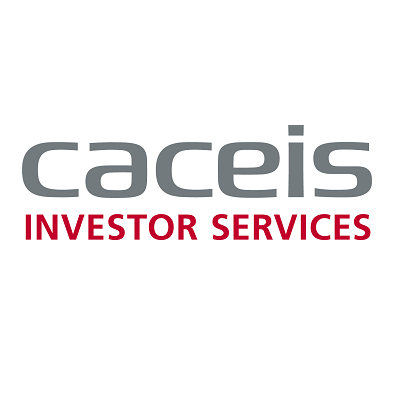In this two-part article, Kamel Torki, Group Product Manager, in charge of T+1 Initiative at CACEIS takes an in-depth look at the migration to a T+1 settlement cycle in the US and other countries, and Eric Derobert, Group Head of Public Affairs analyses how this migration will impact settlement cycles in Europe.
The US move to a T+1 settlement cycle – setting a new global benchmark
Since the end of May this year, the US, Canada, Mexico and Argentina have migrated from a T+2 settlement cycle to T+1, thereby joining T+1 pioneers, India and China. CACEIS expects the settlement acceleration trend to continue as it has become a growing global priority impacting custodians, clients (such as broker-dealers), and CSDs.
Financial regulators across the world are keen to shorten the duration between trade execution and settlement as it mitigates credit, operational, market and counterparty risk while reducing margin requirements, increasing market liquidity, and permitting more efficient use of capital.
 This is not the first time settlement cycles have been shortened - in 2017, the US moved from T+3 to T+2. However, the key difference with T+1 is that it eliminates the 1 day buffer between trade execution and settlement which was generally used to fix settlement mismatches, ensure timely funding, prevent settlement failure, and thus increase the amount of preparation work required to avoid operational risk on the buy and sell side.
This is not the first time settlement cycles have been shortened - in 2017, the US moved from T+3 to T+2. However, the key difference with T+1 is that it eliminates the 1 day buffer between trade execution and settlement which was generally used to fix settlement mismatches, ensure timely funding, prevent settlement failure, and thus increase the amount of preparation work required to avoid operational risk on the buy and sell side.
According to the US’ T+1 Industry Playbook, which serves as a reference for markets that have not drafted their own document, and CACEIS’ own impact analysis report, the key impacts on industry processes are as follows:
Trade Processing - The lifecycle of a trade is affected from reference data set-ups to real-time trade matching & straight-through processing through to settlement. The US Securities Exchange Commission (SEC), working with Depository Trust & Clearing Corporation (DTCC), a US financial market infrastructure company, has implemented an Affirmation-Confirmation process which ensures pre-matching of settlement instruction details between the Asset Manager and the Executing broker ahead of the settlement at Depository Trust Company (DTC) a subsidiary of the DTCC. Pre-matching reduces the need for trade repairs and thus raises the settlement success rate at DTC.
Although Affirmation is not yet mandatory, it is strongly recommended by SEC. It requires settlement instructions to be sent to Trade Suite ID / DTC by both trading parties prior to 9.00pm ET (US Eastern Time Zone) on T. Buy-side Affirmation from the asset manager is only possible if sell-side Confirmation from Executing Broker is received in advance.
The cut-off for Affirmation is now the key timing reference used by trade counterparties when adapting operational processes and so a local presence or operational capabilities in the time zone is a key consideration. CACEIS’ follow-the-sun model in combination with our custodian Affirmation model has enabled the group to enact a smooth transition and uninterrupted service for clients.
Funding - Ensuring the availability of US Dollars during a shortened settlement cycle is key, and CACEIS covers our custody clients’ FX needs with a broad range of solutions to suit their FX and funding model. These range from AutoFX or Direct FX executed via our Market Solutions desk, through to facilitating the settlement of FX trades executed with third-party counterparties through our cash capabilities or via continuous linked settlement (CLS), which is not applicable to same-day value FX.
Securities Lending – The ability to support stock loan recall timelines is essential , so third-party Securities Lending can be very challenging within a T+1 settlement cycle as it adds another layer to a process which is already very tight. CACEIS has implemented specific processes to manage liquidity and facilitate effective settlement and/or perform fully automated stock loan recalls. We don’t expect any major changes to our Securities Lending operating model and client servicing will be unaffected.
Corporate Actions - Under T+1, the Ex-Date and Record Date are now the same. The cover protect timeline is now equal to voluntary corporate action expiration date, plus 1 trading day.
Fund Settlement Mismatches - Liquidity mismatches occur when there are differences between settlement cycles of investment funds domiciled in Europe (usually T+3) and their underlying portfolio holdings (T+1). This leads to cash management challenges for Asset managers needing to avoid UCITS investment policy compliance breaches by covering potential overdrafts in the case of large subscriptions or long balances for large redemptions.
Today, funds with a significant exposure to North America are looking into aligning settlement cycles by moving from T+3 to T+2 or even T+1. Despite a lack of progress, we expect clients to continue to seek a solution as mismatches increase the cost of trading and funding, which is unsustainable and some liquidity management solutions are not applicable to all investments or eligible securities strategies, such as borrowing, futures, repo/reverse repo, or use of the “override” provision. This override, permitted by the SEC, allows for non-T+1 settlement where both parties agree at the time of the transaction.
CACEIS already has everything in place to support funds with settlement cycles ranging from T-1 to T+3. To ensure the group was ready, our T+1 Project Team performed a gap analysis between our systems and processes, and the requirements in local regulator publications such as the US T+1 Industry Playbook. We also followed guidance published by DTCC and our two US agent banks.
Despite industry concerns including spiking fail rates, low affirmation percentages and funding gaps, CACEIS has managed to help clients avoid any such issues. Advanced preparation, clear client communication, information sessions, and post-implementation support have enabled us to perform a smooth T+2 to T+1 transition for our clients. By May this year, CACEIS’ level of DTC Affirmation for transactions is approaching 95%, in line with industry rate, which has risen significantly since January’s rate of 73%.
With the US move to a T+1 settlement cycle, how will Europe react?
As the USA and other North and South American countries have reduced their settlement cycle, European countries are under pressure to follow suit.
Following a recent “Call for evidence on shortening the settlement cycle” by ESMA, it is expected to publish a report in Q3 or Q4 this year. One option can be discarded from the outset - T+0 - which is currently not a viable option over the short nor the medium term.
 From the participants perspective, shortening the settlement cycle was not a priority. The move from T+3 to T+2 was relatively recent (2014) and market participants are aware that a number of complex issues will arise from a move to T+1. Most of these issues were brought to light during the consultation process run by ESMA. Shortening the settlement cycle involves a host of related steps but mere settlement (i.e. exchange of cash for securities) with complex tasks like allocation confirmation, ensuring availability of cash and securities, clearing, and corporate actions, will undergo major changes in terms of the time they require. This may go on to impact the structure of systems, working hours for operations and other staff, and even require task relocation.
From the participants perspective, shortening the settlement cycle was not a priority. The move from T+3 to T+2 was relatively recent (2014) and market participants are aware that a number of complex issues will arise from a move to T+1. Most of these issues were brought to light during the consultation process run by ESMA. Shortening the settlement cycle involves a host of related steps but mere settlement (i.e. exchange of cash for securities) with complex tasks like allocation confirmation, ensuring availability of cash and securities, clearing, and corporate actions, will undergo major changes in terms of the time they require. This may go on to impact the structure of systems, working hours for operations and other staff, and even require task relocation.
Despite the legitimate obstacles and issues identified, European markets are nevertheless expected to reduce the settlement cycle. Experts agree, the move to T+1 is not a question of “if”, rather “when?”, as the ball has already started rolling.
The drivers of a T+1 settlement cycle have been widely discussed in the industry - reduction market and counterparty risk, and collateral requirements at CCPs, and opportunities to leverage the benefits of automation. Europe’s already low settlement fail rates should also fall further after the challenging adaptation phase has been completed. A key point to note is that, policymakers see T+1 as a catalyst for further harmonisation in Europe, thereby boosting the international competitiveness of the Capital Markets Union.
Industry pundits forecast a T+1 roll out in Europe somewhere around 2027 or 2028. The exact date currently remains unclear as certain key stakeholders are calling for a longer adaptation period. The major adjustments to the regulatory framework and the opportunity to learn from the USA’s recent switch are also pushing back the date. However, for the industry to be able to implement the new settlement cycle soon, a date would have to be confirmed by early 2025 at the latest.
CACEIS is well aware that moving to T+1 will put additional stress on the entire value chain. We are fully committed to supporting our clients’ needs during the entire T+1 migration process and will do everything possible to ensure they benefit from a smooth transition, uninterrupted servicing, and clear communication. This change creates an opportunity for CACEIS to develop a new service package that builds on our existing expertise and our robust technological infrastructure and platforms. Such an offer will enable clients to remain fully focused on their core area of expertise – creating value for their investors – while our industry-proven, hands-off services take care of the back-end. Such services include AutoFX for automatic forex trade matching for securities settlement using a full-STP process all the way to the custody account, Securities Lending, with automated processes that preserve yield enhancements on T+1 securities while delivering a frictionless experience leveraging full-STP integration, and an Execution-to-custody offering covering the entire value chain for securities and listed derivative trade execution.



